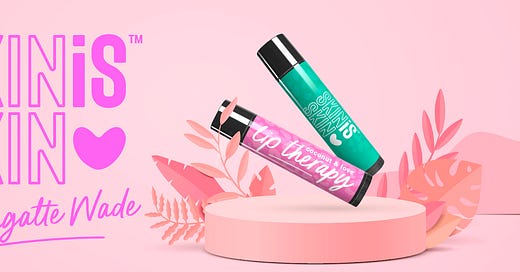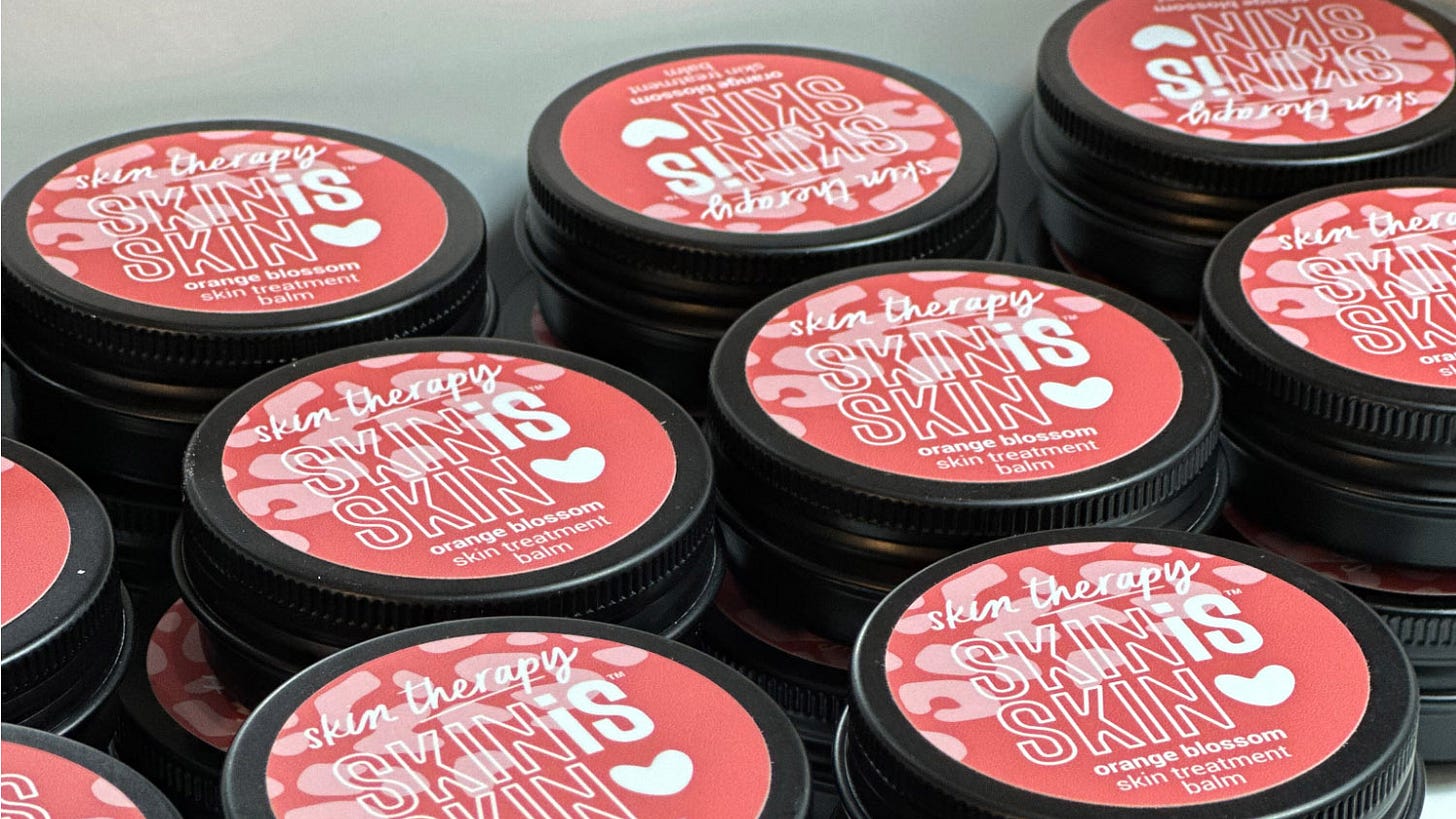The following is an adapted excerpt from my book The Heart of a Cheetah. We’re less than a week away from the launch, and I CANNOT WAIT for you to read it.
You can preorder all versions—including audio—here. And for a limited time, you can read the first chapter here.
We’re creating a movement toward Africa’s Bright Future, and I’d love for you to join us!
In 2016, I had a life-changing moment.
This was soon after a chain of disappointments that convinced me to shut down Tiossan, my first skincare company. My spirit was really, really down. I kept asking myself, What do I do? Where do I go with this? In truth, I didn’t have the energy to go forward.
I was also depressed because a number of Black men had recently been killed by the police. Alton Sterling, a father of five, was gunned down in Baton Rouge. The next day, Philando Castile was shot. Castile was the 136th Black person who had been killed by the cops that year. And there were videos. You had to watch, and then you had to rage.
My husband Michael and I took off for a weekend in the hill country outside of Austin, where Michael was going to participate in a closed session with John Mackey and a few others. I wasn’t invited, so I stayed in our hotel room. I spent hours consumed by Black Twitter, which was agitated over the ongoing deaths and riots. I was listening to the people who were on the street participating because I trusted them more than the news.
It was bad. My Black friends were as anxious as I was. And then a friend of mine, someone I had always known as level-headed and open to everyone, spoke up. She posted a tweet saying we Blacks were fools to ever think “they” would regard us as equals. “It’s never going to happen,” she said. “From now on everyone has to choose sides.”
I was sitting there in the hotel, and the news came on that a Black man had just shot and killed five cops in Dallas. Another nine were wounded. It was a revenge shooting. The shooter said as much. The whole thing was crazy. But there it was. I found myself thinking, Well, if they want war, they’ll have war.
The moment I said that to myself, the door to our hotel room opened up, and who stood there? Michael.
Minnesotan, blond, blue-eyed Michael. My beloved.
I went into this hysterical laugh. Go to war with whom, exactly? With him and people who looked like him? Because of the skin they were born in?
That was when three thoughts spontaneously formed in my mind:
The first was: Skin is skin.
The next words were: Go beyond.
And then: This is so ridiculous.
It was at that moment that I snapped out of the darkness. I said to Michael, “This is serious, and I’m going to do something about it. I can’t accept that the only thing we can have is division.”
And so, as with anything I’m serious about, I did the research. I went on a journey to discover why there is bias. I learned that if you have a brain, you have biases. Biases begin very early in life and serve a very important function. Evolution tells us that to best ensure your survival, you must first make sense of the world, especially by gaining the skills and knowledge to determine if a person or situation is a danger to you. The failure to do so means you may not be around the next second.
The role of the brain in this process is to help you do that as quickly and efficiently as possible, which it does through automation. For example, once the brain has figured out one plus one equals two, it will never waste the time to figure it out again.
By the time you’re three years old, you’re starting to categorize everything. That way you don’t have to figure it out the next time. You only pause to deal with new situations; that’s when your conscious mind kicks in. But for everything else, the brain assumes it knows the score. It makes most of your decisions for you, usually based on what it has already categorized.
For example, it may have learned that “a Black man with a hoodie” may be dangerous. You’re not even conscious your brain is doing this, but you cross the street to avoid the Black man anyway.
Yes, you have biases. So do I. After all, our brains are data collection units intent on ensuring our health and happiness. The brain, with its natural mechanisms hardwired since birth, is the hardware. The software it runs on is your cultural imprint, which is everything that goes into the brain from your environment, including visual and verbal information and every experience since the day you were born.
The news you watch and read is constructed to take advantage of this predisposition, which is why “if it bleeds, it leads.” It’s also why the producers choose a mugshot for the Black kid who was caught ripping off bread from the grocery store and the high school graduation picture of the White kid who just murdered his young family and dissolved them in acid. The former is a criminal. The latter is sick. Horrifically unjust, to be sure.
Unconscious bias is basically a habit. The neurons have created a pathway—a shortcut—and in that pathway lives the habit. But it’s not just a habit. It’s a bad habit—an evil habit.
So how do you get rid of a bad habit? First, you have to acknowledge that you have this habit. Second, you have to decide you don’t want it.
In order to remove your biases, you have to be mindful. You have to switch your conscious brain on; otherwise it remains in autopilot where all the biases live. You have to be reminded to stop the brain in its tracks.

I found it helpful to understand the foundations of bias in evolutionary psychology. It didn’t reduce the injustice. But it provided me with an explanation of what was going on—and the first inklings of a strategy for reducing this bias.
We’re not inherently bad. We just need to pay attention.
Like so many things brought about by evolution, including our ravenous desire for sugar and fat, these biases are declining in survival value. In today’s world we don’t need fight or flight. (How many bears have you run into lately?) We have to transcend that instinct.
And you can transcend it, especially if you know how it works. It is possible to undo a lifetime of cultural coding. As with any bad habit you want to transcend, you have to be able to say, “Okay, I have this bad habit—in this case, biases.”
Then you need to create reminders to switch off the autopilot in your brain. From there, you can follow a sort of mindfulness practice made of five exercises, scientifically designed to rewire your brain to free yourself of stereotypes. The process to rewire the brain takes approximately one year. The whole thing is beyond fascinating.
To understand this issue and be able to use its associated solution, we have to create a culture in which it is all right to recognize our biology. We have to be able to admit, “I’ve got a brain; therefore, I’ve got biases,” without being accused of all types of “isms.”
The cancel culture we are deep in does not make this critical step easy. That’s why I decided to build a brand rather than an NGO or other organization of that kind. Brands have such power to affect culture. In this case, if I could make it culturally acceptable to say, for example, “I’ve got biases,” that would be a beautiful thing.
So I set out to create a new brand. I wanted to build something cool. And that’s how my new company, SkinIsSkin, came to be.
I chose a lip balm as our flagship product because it’s so well suited to what I have in mind. It serves as a little Jiminy Cricket in your pocket. A portable conscience. Every time you pull it out, you remember, and you think about your biases.






